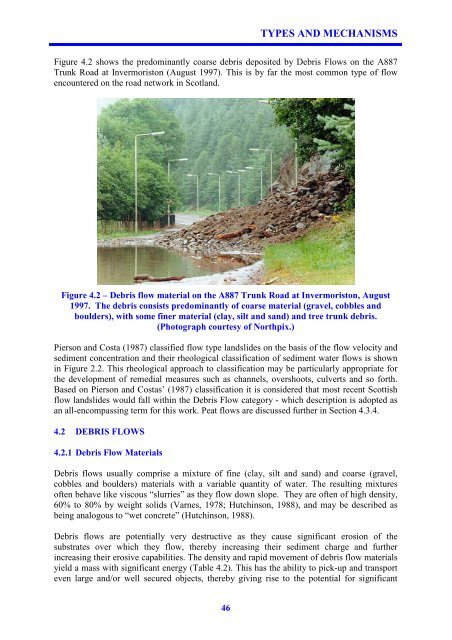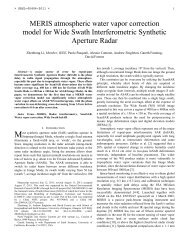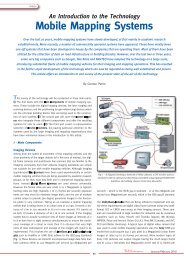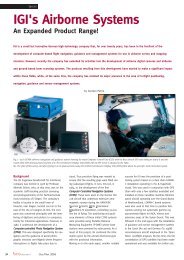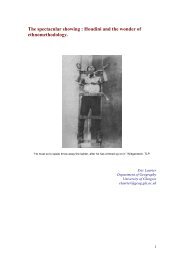Scottish Road Network Landslides Study - University of Glasgow
Scottish Road Network Landslides Study - University of Glasgow
Scottish Road Network Landslides Study - University of Glasgow
You also want an ePaper? Increase the reach of your titles
YUMPU automatically turns print PDFs into web optimized ePapers that Google loves.
46<br />
TYPES AND MECHANISMS<br />
Figure 4.2 shows the predominantly coarse debris deposited by Debris Flows on the A887<br />
Trunk <strong>Road</strong> at Invermoriston (August 1997). This is by far the most common type <strong>of</strong> flow<br />
encountered on the road network in Scotland.<br />
Figure 4.2 – Debris flow material on the A887 Trunk <strong>Road</strong> at Invermoriston, August<br />
1997. The debris consists predominantly <strong>of</strong> coarse material (gravel, cobbles and<br />
boulders), with some finer material (clay, silt and sand) and tree trunk debris.<br />
(Photograph courtesy <strong>of</strong> Northpix.)<br />
Pierson and Costa (1987) classified flow type landslides on the basis <strong>of</strong> the flow velocity and<br />
sediment concentration and their rheological classification <strong>of</strong> sediment water flows is shown<br />
in Figure 2.2. This rheological approach to classification may be particularly appropriate for<br />
the development <strong>of</strong> remedial measures such as channels, overshoots, culverts and so forth.<br />
Based on Pierson and Costas’ (1987) classification it is considered that most recent <strong>Scottish</strong><br />
flow landslides would fall within the Debris Flow category - which description is adopted as<br />
an all-encompassing term for this work. Peat flows are discussed further in Section 4.3.4.<br />
4.2 DEBRIS FLOWS<br />
4.2.1 Debris Flow Materials<br />
Debris flows usually comprise a mixture <strong>of</strong> fine (clay, silt and sand) and coarse (gravel,<br />
cobbles and boulders) materials with a variable quantity <strong>of</strong> water. The resulting mixtures<br />
<strong>of</strong>ten behave like viscous “slurries” as they flow down slope. They are <strong>of</strong>ten <strong>of</strong> high density,<br />
60% to 80% by weight solids (Varnes, 1978; Hutchinson, 1988), and may be described as<br />
being analogous to “wet concrete” (Hutchinson, 1988).<br />
Debris flows are potentially very destructive as they cause significant erosion <strong>of</strong> the<br />
substrates over which they flow, thereby increasing their sediment charge and further<br />
increasing their erosive capabilities. The density and rapid movement <strong>of</strong> debris flow materials<br />
yield a mass with significant energy (Table 4.2). This has the ability to pick-up and transport<br />
even large and/or well secured objects, thereby giving rise to the potential for significant


